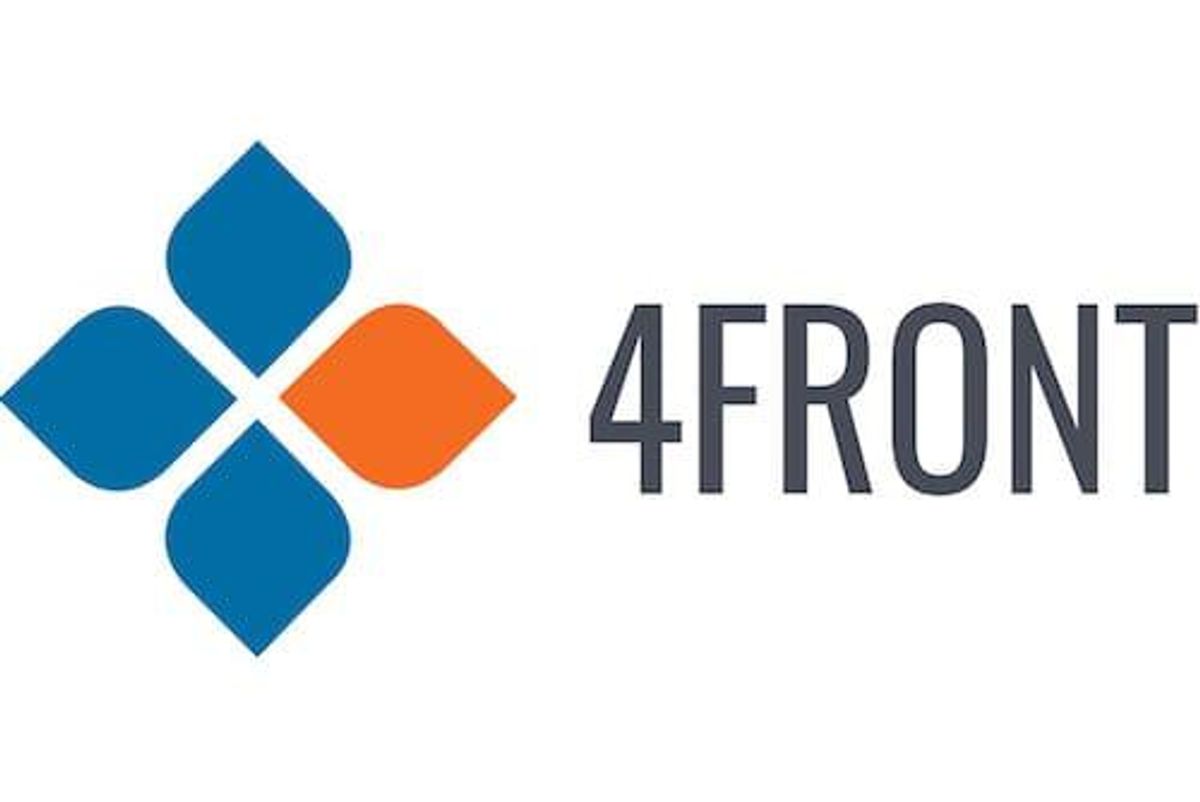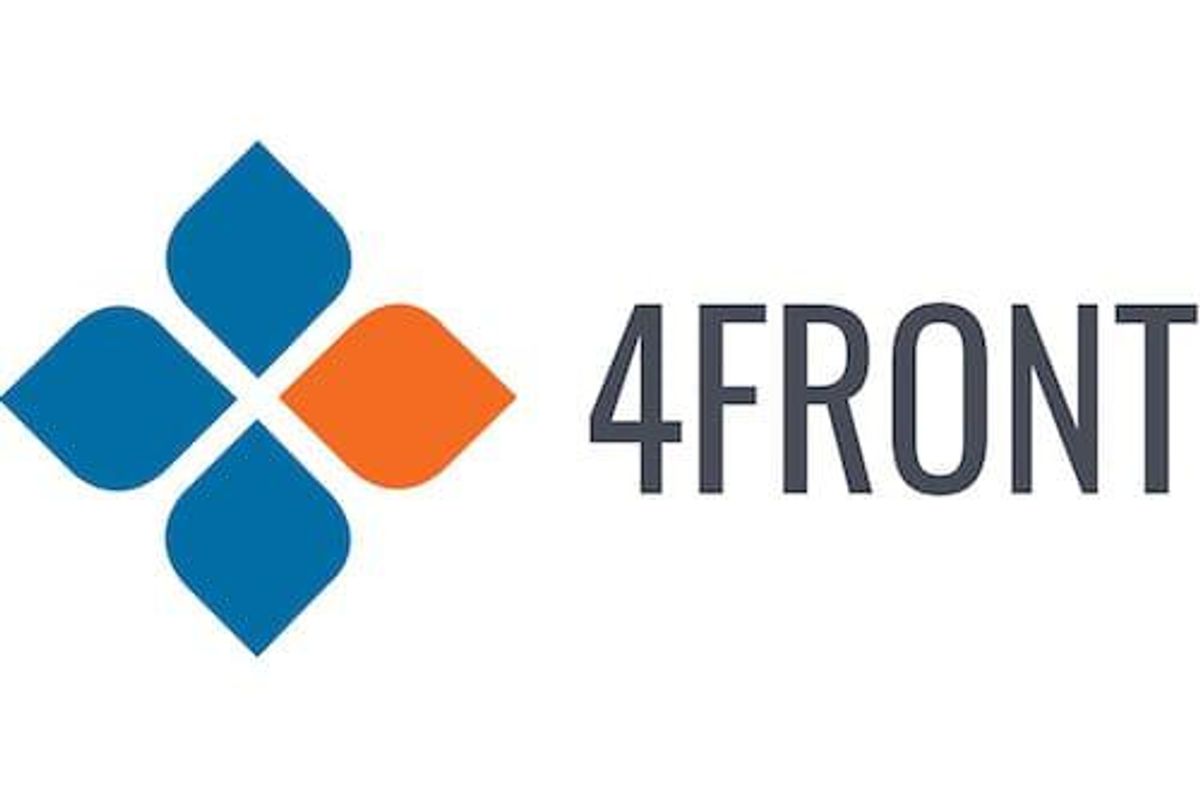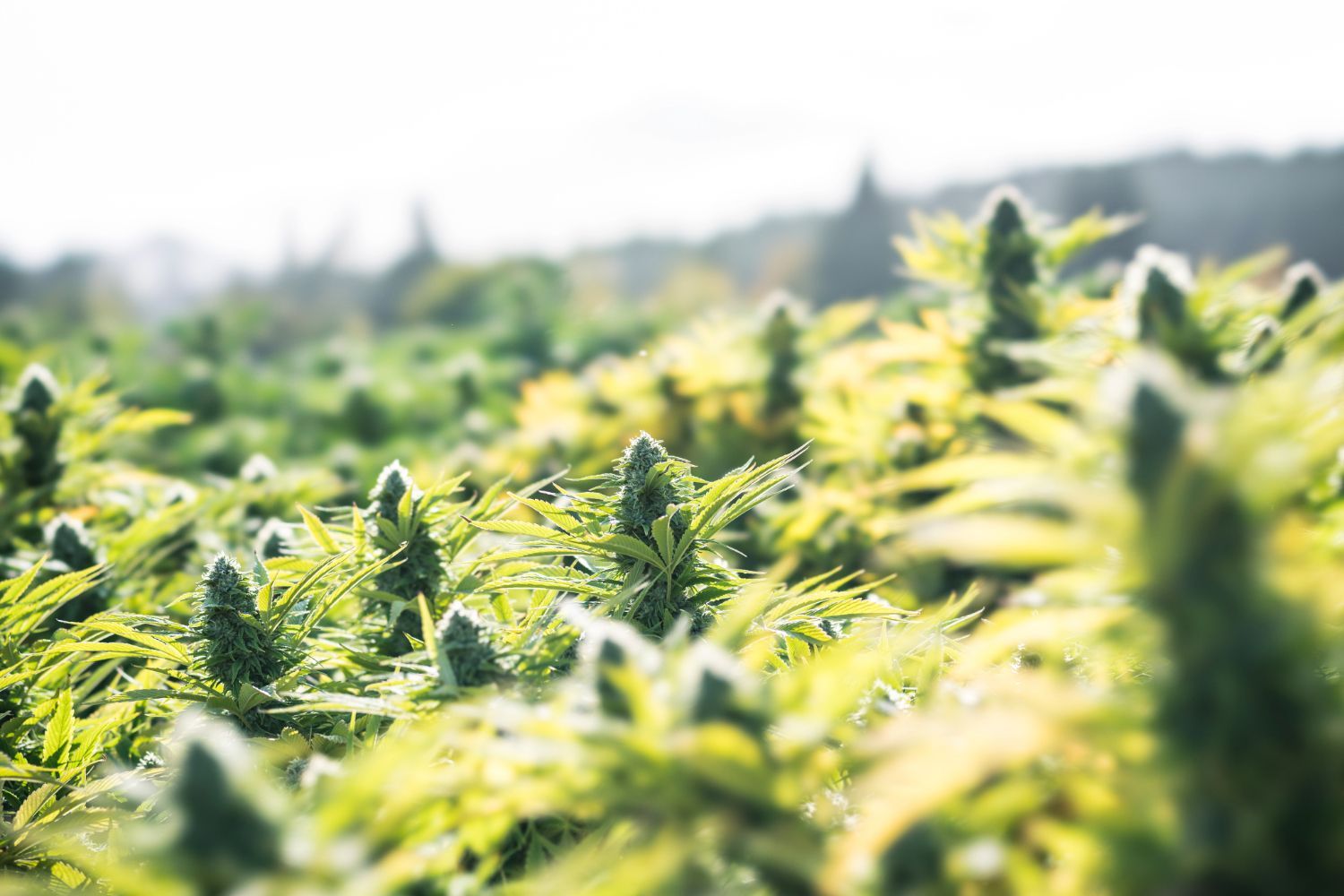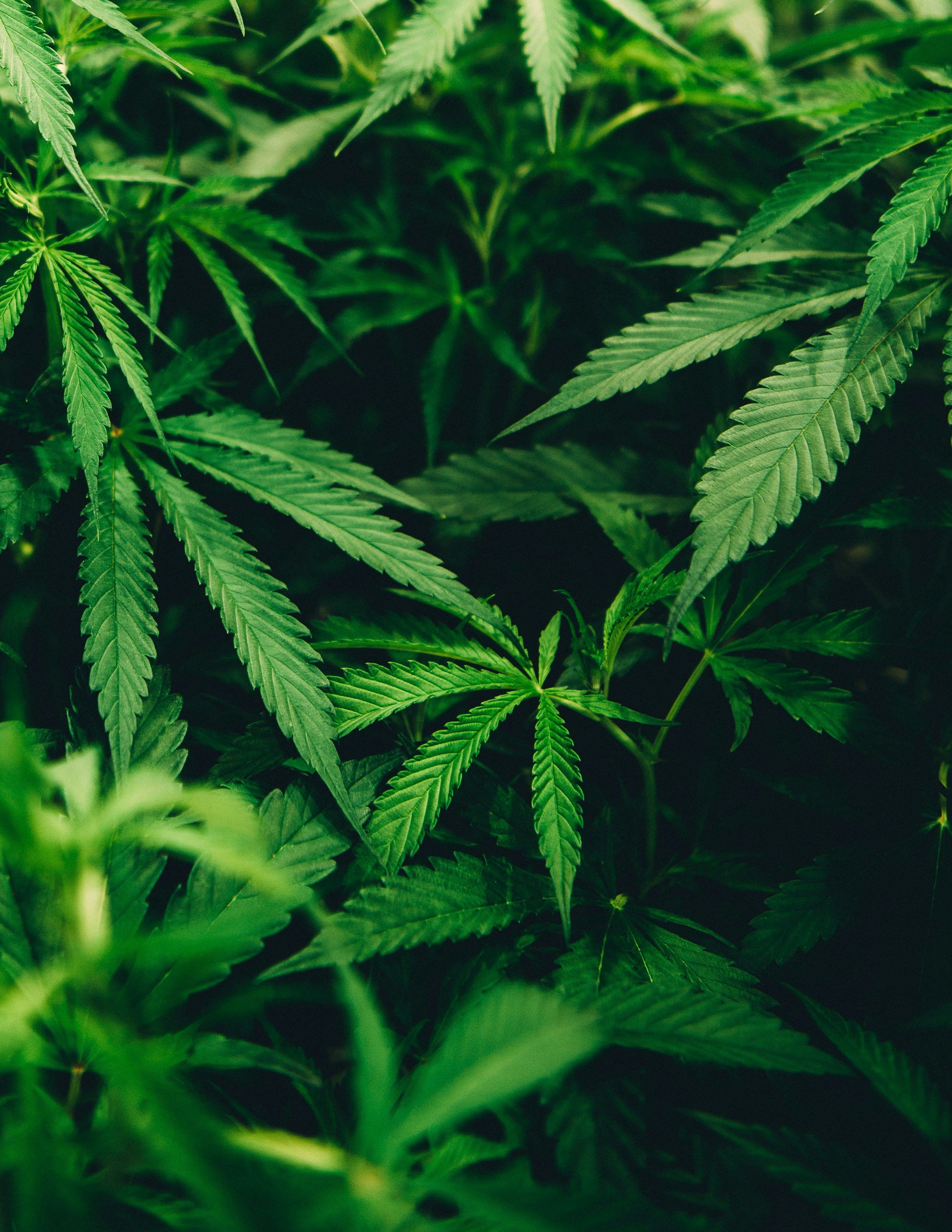
Q4 Systemwide Pro Forma Revenue increased to $25.0 million , with full year 2020 Systemwide Pro Forma sales of $88.1 million
Q4 Adjusted EBITDA increased 59% sequentially to $5.9 million , representing Adjusted EBITDA margin of 24%
Reiterated FY2021 guidance for Systemwide Pro Forma Revenue of $170 -180 million and Adjusted EBITDA of $40 -50 million
The Company's existing licensed projects at maturity represent a long-term revenue and EBITDA opportunity upwards of $650 million and $250 million , respectively
PHOENIX , April 6, 2021 /CNW/ - 4Front Ventures Corp. (CSE: FFNT) (OTCQX: FFNTF) (" 4Front " or the " Company ") today announced its financial results for the fourth quarter and fiscal year ended December 31, 2020 . All financial information is presented in U.S. dollars unless otherwise indicated.
Fourth Quarter 2020 ("Q4 2020") Financial Results Highlights
- Systemwide Pro Forma Revenue was $25.0 million
- GAAP-reported revenue was $17.0 million
- Adjusted EBITDA was $5.9 million
Fiscal Year 2020 ("FY 2020") Financial Results Highlights
- Systemwide Pro Forma Revenue was $88.1 million
- GAAP-reported revenue was $57.6 million , a 203% increase compared to the prior year
- Adjusted EBITDA was $5.9 million
Operational Highlights
- Opened second Illinois Mission Dispensary in Calumet City , and recently announced 2021 expansion plans in Illinois which includes the build out of an up to 558,000 square foot cultivation and production facility
- Completed expansion and retrofit of cultivation and production facility in Georgetown, MA and Elk Grove Village, IL. Continued construction on state-of-the-art 185,000 square foot production facility in Commerce, California , fully funded and on track for Q2 2021 opening
- Third Massachusetts dispensary in Brookline on track for Q2 2021 opening
- Completed sale leaseback transaction with Innovative Industrial Properties; ended year with $18.9 million of cash and $47.3 million in long-term debt due in May 2024
Management Commentary
"4Front's strong fiscal 2020 performance is validation that our core strategy of replicating low-cost production methods, developed and refined within our Washington facilities, combined with our steadfast focus on execution is working," said Leo Gontmakher , Chief Executive Officer of 4Front. "We ended 2020 with tremendous business momentum that we have carried into the new year, as we scaled and replicated our operations across the growing adult-use markets of Massachusetts , Illinois and California ."
Mr. Gontmakher added, "Our strong performance was driven by growing consumer demand for our quality manufactured products introduced in Massachusetts over the last year, the continued strength of the Illinois market, and a solid quarter out of our Washington facilities. We also completed the construction of our second Illinois dispensary in Calumet City , which opened in December, plus our cultivation/manufacturing facilities in Illinois and Massachusetts which we successfully transitioned into the 'Washington Way' with cultivation yields now meeting or exceeding those from our Washington facilities."
Mr. Gontmakher concluded, "We are well positioned to further scale the business and execute on our expansion strategy in 2021. This includes significantly expanding our cultivation and manufacturing footprint in Illinois and entering the $3 billion California market. Further bolstering our financial position is the fact that we are now generating positive operating cash flow, in line with our stated goals from the start of the year. Given the strength of our operations, I am pleased to reiterate our 2021 guidance of $170 - $180 million in Pro Forma Systemwide Revenue and $40 - $50 million in Adjusted EBITDA, with the longer-term view to generate $650 million in revenue and $250 million in EBITDA based on our current licensed footprint."
Business Updates and Developments
Q4 2020 Systemwide Pro Forma Revenue increased 12% quarter-over-quarter to $25.0 million . This growth was driven by continued robust activity across the Company's portfolio of operating assets, led by the first full quarter of recreational sales in Massachusetts and the opening of 4Front's second Illinois retail location in Calumet City.
Q4 Adjusted EBITDA increased 59% quarter-over-quarter to $5.9 million representing adjusted EBITDA margin of 24%. The Company continued to demonstrate considerable operating leverage in the fourth quarter, exceeding internal expectations, after initially achieving profitability during the third quarter of 2020. Through the combination of 4Front's low-cost production model, tight expense controls, and accelerating revenues the Company is well positioned to extend its profitability as it scales up its operating footprint. The Company achieved positive operating cash flow of $3.2 million in Q4 2020 and remains poised to show significant operating leverage in 2021.
In Q4 2020 4Front opened its second Illinois Mission Dispensary in Calumet City , and recently announced additional 2021 expansion plans in Illinois . The expansion plan includes the build out of an up to 558,000 square foot cultivation and production facility (the "Facility"), which the Company recently secured financing to build. Subsequent to the year end, the Company entered into definitive agreements with both the landowner and an affiliate of Innovative Industrial Properties, Inc., to acquire the land for $6.5 million and fund the approximately $45 million buildout of phase one of the Facility. The first phase constitutes 258,000 square feet of building comprising 65,000 square feet of flowering canopy with approximately 70,000 square feet of manufacturing space and is expected to be operational in the fourth quarter of 2022.
The Company's fully-funded, state-of-the-art 185,000 square foot manufacturing only facility in Commerce, California is nearing completion and is expected to be ready to serve the California cannabis market in Q2 2021. The Company is planning to launch its first full line of edibles, tinctures and vape products on California retail shelves starting in May 2021 .
Construction remains on schedule at the Company's third Massachusetts dispensary in Brookline . Final inspection by the Cannabis Control Commission anticipated to occur in June 2021 and the Company remains confident that it will open the Brookline dispensary in Q2 2021.
2021 Outlook
Based on the continued strength of the Company's operations and robust consumer demand, 4Front reiterates its previously announced FY 2021 guidance and anticipates Systemwide Pro Forma Revenue of $170 -180 million and Adjusted EBITDA of $40 -50 million. This guidance is fully funded and contemplates only current operations plus the opening of the Brookline, Massachusetts dispensary and the Commerce production facility in Q2 of 2021. If such openings are delayed due to Covid-19, guidance could be negatively affected.
(Please see Note Regarding Non-GAAP Measures, Reconciliation, and Discussion below.) (*Please see the Financial Statement section below, and the Company's Fourth Quarter 2020 Condensed Consolidated Financial Statements and Management Discussion and Analysis ("MD&A"), available under the Company's EDGAR profile)
Additional Details
As of the date of the MD&A, there were the equivalent of 566,186,697 Class A Subordinate Voting Shares outstanding when calculated as if all share classes were converted to Subordinate Voting Shares. For further details regarding 4Front's share structure, please see its profile at www.thecse.com .
Conference Call
The Company will also host a conference call and webcast on Tuesday, April 6, 2021 at 5:00 p.m. ET to review its operational and financial results and provide an update on current business trends.
To join the call, dial 1-877-407-0792 toll free from the United States or Canada or 1-201-689-8263 if dialing from outside those countries. The webcast can be accessed at this link .
The call will be available for replay until Tuesday April 13, 2021 . To access the telephone replay, dial 1-844-512-2921 toll free from the United States and Canada , or 1-412-317-6671 if dialing from outside those countries, and use this replay pin number: 13717894.
About 4Front Ventures Corp.
4Front (CSE: FFNT) (OTCQX: FFNTF) is a national multi-state cannabis operator and retailer, with a market advantage in mass-produced, low-cost quality branded cannabis products. 4Front manufactures and distributes a portfolio of over 25 cannabis brands including Marmas, Crystal Clear , Funky Monkey, Pebbles, and the Pure Ratios wellness collection, distributed through retail outlets and their chain of strategically positioned Mission branded dispensaries.
Headquartered in Phoenix, Arizona , 4Front has operations in Illinois , Massachusetts , California , Michigan , and Washington state . From plant genetics to the cannabis retail experience, 4Front's team applies expertise across the entire cannabis value chain. For more information, visit 4Front's website www.4frontventures.com .
Financial Statements
4Front Ventures Corp.
Formerly 4Front Holdings, LLC
Consolidated Balance Sheets
As of December 31, 2020 and December 31, 2019
| | | December 31, | | December 31, | ||
| Amounts expressed in thousands of U.S. dollars except for share and per share data | | 2020 | | 2019 | ||
| ASSETS | | | | | | |
| Current assets: | | | | | | |
| Cash | | $ | 18,932 | | $ | 5,789 |
| Accounts receivable | | | 437 | | | 597 |
| Other receivables | | | 1,341 | | | 405 |
| Current portion of lease receivables | | | 3,450 | | | 9,556 |
| Inventory | | | 18,037 | | | 9,825 |
| Current portion of notes receivable | | | 264 | | | 1,871 |
| Prepaid expenses | | | 2,275 | | | 2,198 |
| Total current assets | | | 44,736 | | | 30,241 |
| Restricted cash | | | — | | | 2,352 |
| Property and equipment, net | | | 33,618 | | | 41,822 |
| Notes receivable and accrued interest | | | 91 | | | 1,049 |
| Lease receivables | | | 7,595 | | | 23,944 |
| Intangible assets, net | | | 28,790 | | | 35,147 |
| Goodwill | | | 23,155 | | | 40,283 |
| Right-of-use assets | | | 62,466 | | | 20,757 |
| Investments | | | — | | | 759 |
| Deposits | | | 4,305 | | | 6,347 |
| TOTAL ASSETS | | $ | 204,756 | | $ | 202,701 |
| LIABILITIES AND SHAREHOLDERS' EQUITY | | | | | | |
| LIABILITIES | | | | | | |
| Current liabilities: | | | | | | |
| Accounts payable | | $ | 4,722 | | $ | 5,866 |
| Accrued expenses and other current liabilities | | | 6,427 | | | 3,465 |
| Taxes payable | | | 11,792 | | | 1,609 |
| Derivative liability | | | 5,807 | | | — |
| Current portion of convertible notes | | | 1,652 | | | — |
| Current portion of lease liability | | | 1,909 | | | 972 |
| Current portion of contingent consideration payable | | | 2,393 | | | 750 |
| Current portion of notes payable and accrued interest | | | 3,372 | | | 6,190 |
| Total current liabilities | | | 38,074 | | | 18,852 |
| Convertible notes | | | 14,722 | | | 35,607 |
| Notes payable and accrued interest from related party | | | 45,362 | | | 44,289 |
| Long term notes payable | | | 1,907 | | | 1,903 |
| Long term accounts payable | | | 1,600 | | | 1,600 |
| Contingent consideration payable | | | 3,103 | | | 4,714 |
| Deferred tax liability | | | 7,670 | | | — |
| Lease liability | | | 51,545 | | | 20,976 |
| TOTAL LIABILITIES | | | 163,983 | | | 127,941 |
| SHAREHOLDERS' EQUITY | | | | | | |
| Equity attributable to 4Front Ventures Corp. | | | 250,583 | | | 252,656 |
| Additional paid-in capital | | | 40,686 | | | 25,618 |
| Deficit | | | (250,548) | | | (203,497) |
| Non-controlling interest | | | 52 | | | (17) |
| TOTAL SHAREHOLDERS' EQUITY | | | 40,773 | | | 74,760 |
| TOTAL LIABILITIES AND SHAREHOLDERS' EQUITY | | $ | 204,756 | | $ | 202,701 |
4Front Ventures Corp.
Formerly 4Front Holdings, LLC
Consolidated Statements of Operations and Comprehensive Loss
For the Years Ended December 31, 2020 and 2019
| Amounts expressed in thousands of U.S. dollars except for share and per share data | | December 31, 2020 | | December 31, 2019 | ||
| REVENUE | | | | | | |
| Revenue from sale of goods | | $ | 46,616 | | $ | 14,812 |
| Real estate income | | | 11,019 | | | 4,220 |
| Total revenues | | | 57,635 | | | 19,032 |
| Cost of goods sold, sale of grown and manufactured products | | | (11,973) | | | (6,844) |
| Cost of goods gold, sale of purchased products | | | (9,151) | | | (4,007) |
| Gross profit | | | 36,511 | | | 8,181 |
| OPERATING EXPENSES | | | | | | |
| Selling and marketing expenses | | | 23,174 | | | 9,038 |
| General and administrative expenses | | | 20,494 | | | 24,984 |
| Depreciation and amortization | | | 4,061 | | | 3,163 |
| Equity based compensation | | | 5,306 | | | 5,913 |
| Impairment of goodwill and intangible assets | | | 16,748 | | | 145,203 |
| Foreign exchange (gain) loss | | | (19) | | | 57 |
| Accretion | | | (643) | | | (337) |
| Total operating expenses | | | 69,121 | | | 188,021 |
| Loss from operations | | | (32,610) | | | (179,840) |
| Other income (expense) | | | | | | |
| Interest income | | | 77 | | | 85 |
| Interest expense | | | (15,779) | | | (5,559) |
| Change in fair value of derivative liability | | | (1,578) | | | 5,317 |
| Gain on sale leaseback transactions | | | 3,345 | | | — |
| Gain on restructuring of notes payable | | | 380 | | | — |
| Gain on extinguishment of debt | | | 1,218 | | | — |
| Loss on investments | | | (759) | | | (529) |
| Other | | | 763 | | | 2,500 |
| Total other income (expense) | | | (12,333) | | | 1,814 |
| Net loss before income taxes | | | (44,943) | | | (178,026) |
| Income tax expense | | | (15,049) | | | (966) |
| Net loss from continuing operations | | | (59,992) | | | (178,992) |
| Net income (loss) from discontinued operations, net of taxes | | | 12,987 | | | (3,133) |
| Net loss | | | (47,005) | | | (182,125) |
| Net income (loss) attributable to non-controlling interest | | | 46 | | | (115) |
| Net loss attributable to shareholders | | $ | (47,051) | | $ | (182,010) |
| Basic and diluted loss per share | | $ | (0.09) | | $ | (0.43) |
| Weighted average number of shares outstanding, basic and diluted | | | 520,563,800 | | | 420,306,991 |
Note Regarding Non-GAAP Measures, Reconciliation, and Discussion
In this press release, 4Front refers to certain non-GAAP financial measures such as Systemwide Pro Forma Revenue and Adjusted EBITDA. These measures do not have any standardized meaning prescribed by GAAP and may not be comparable to similar measures presented by other issuers. 4Front defines Systemwide Pro Forma Revenue as total revenue plus revenue from entities with which the Company has a management contract, or effectively similar relationship (net of any management fee or effectively similar revenue) but does not consolidate the financial results of per US GAAP ASC 810. 4Front considers this measure to be an appropriate indicator of the growth and scope of the business.
Adjusted EBITDA is defined by the Company as earnings before interest, taxes, depreciation and amortization less share-based compensation expense and one-time charges related to acquisition, financing related costs and other non-recurring expenses. 4Front considers these measures to be an important indicator of the financial strength and performance of our business.
This news release was prepared by management of 4Front Ventures, which takes full responsibility for its contents. The Canadian Securities Exchange ("CSE") has not reviewed and does not accept responsibility for the adequacy of this news release. Neither the CSE nor its Regulation Services Provider (as that term is defined in the policies of the CSE) accepts responsibility for the adequacy or accuracy of this release.
This news release does not constitute an offer to sell or a solicitation of an offer to sell any of the securities in the United States .
Forward Looking Statements
Statements in this news release that are forward-looking statements are subject to various risks and uncertainties concerning the specific factors disclosed here and elsewhere in 4Front Ventures' periodic filings with securities regulators. When used in this news release, words such as "will, could, plan, estimate, expect, intend, may, potential, believe, should," and similar expressions, are forward-looking statements.
Forward-looking statements may include, without limitation, statements related to future developments and the business and operations of 4Front Ventures, statements regarding when or if transactions will close or if/when required conditions to closing are attained, the impact of the transactions on the business of 4Front and other statements regarding future developments of the business. Although 4Front Ventures has attempted to identify important factors that could cause actual results, performance or achievements to differ materially from those contained in the forward-looking statements, there can be other factors that cause results, performance or achievements not to be as anticipated, estimated or intended, including, but not limited to: dependence on satisfying closing conditions, [obtaining regulatory approvals]; and engagement in activities currently considered illegal under U.S. federal laws; change in laws; limited operating history; reliance on management; requirements for additional financing; competition; hindering market growth and state adoption due to inconsistent public opinion and perception of the medical-use and adult-use marijuana industry and; regulatory or political change.
There can be no assurance that such information will prove to be accurate or that management's expectations or estimates of future developments, circumstances or results will materialize. As a result of these risks and uncertainties, the results or events predicted in these forward-looking statements may differ materially from actual results or events.
Accordingly, readers should not place undue reliance on forward-looking statements. The forward-looking statements in this news release are made as of the date of this release. 4Front Ventures disclaims any intention or obligation to update or revise such information, except as required by applicable law, and 4Front Ventures does not assume any liability for disclosure relating to any other company mentioned herein.
![]() View original content to download multimedia: https://www.prnewswire.com/news-releases/4front-announces-fourth-quarter-and-fiscal-year-2020-results-and-provides-business-update-301263476.html
View original content to download multimedia: https://www.prnewswire.com/news-releases/4front-announces-fourth-quarter-and-fiscal-year-2020-results-and-provides-business-update-301263476.html
SOURCE 4Front

![]() View original content to download multimedia: https://www.newswire.ca/en/releases/archive/April2021/06/c1501.html
View original content to download multimedia: https://www.newswire.ca/en/releases/archive/April2021/06/c1501.html







